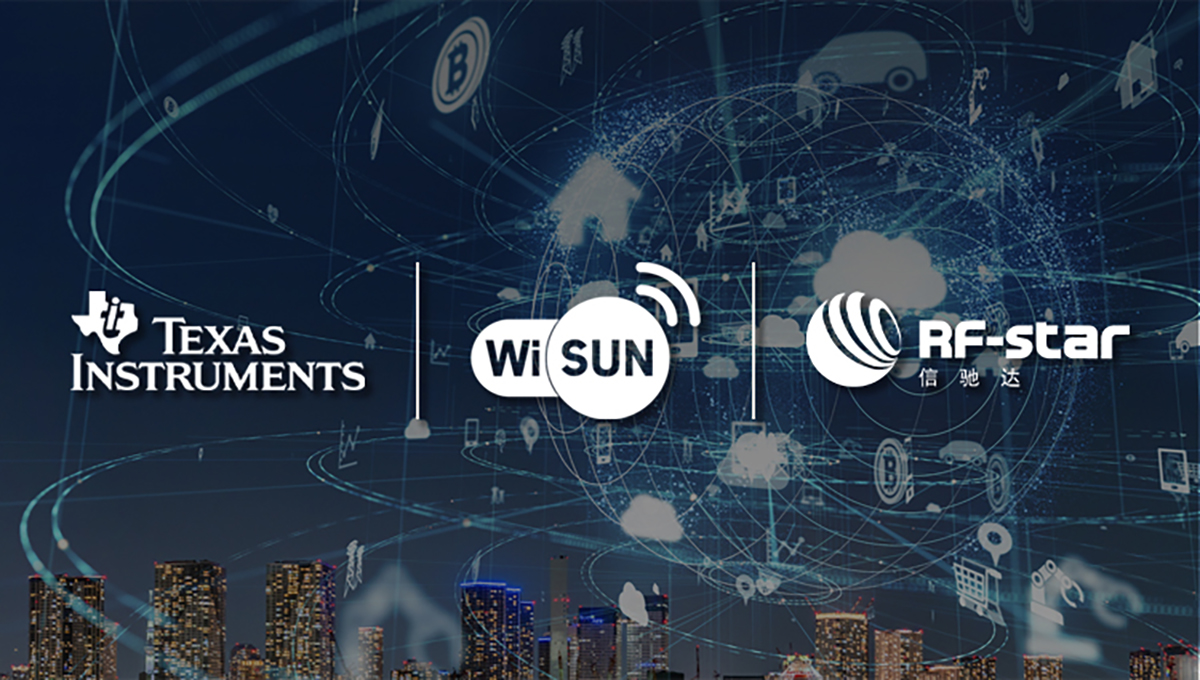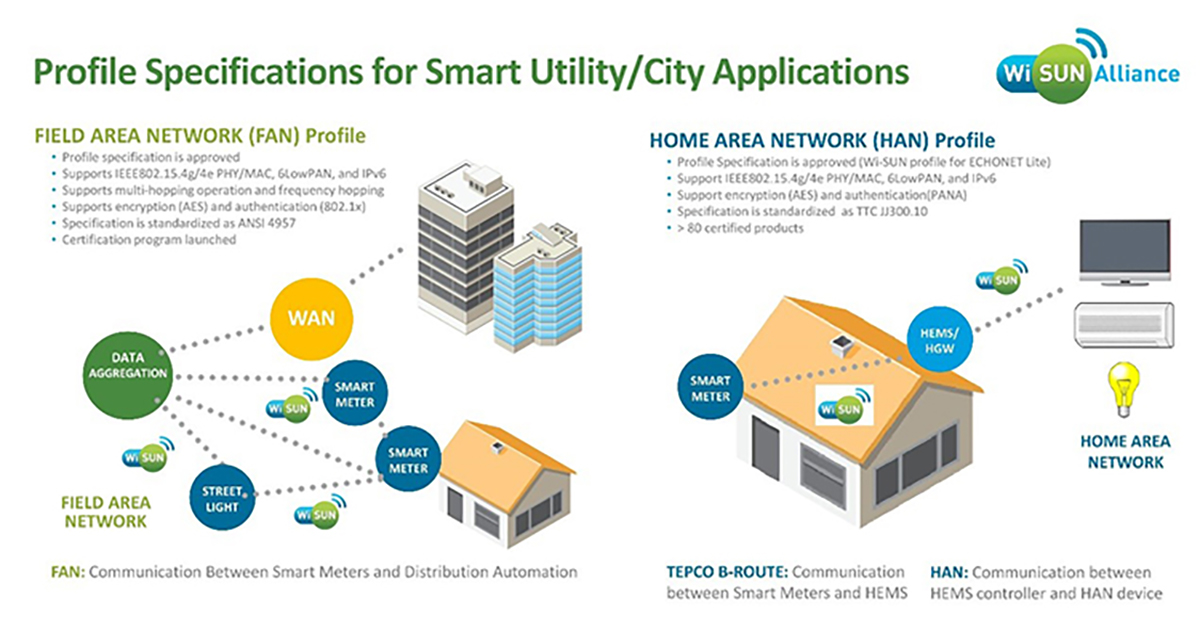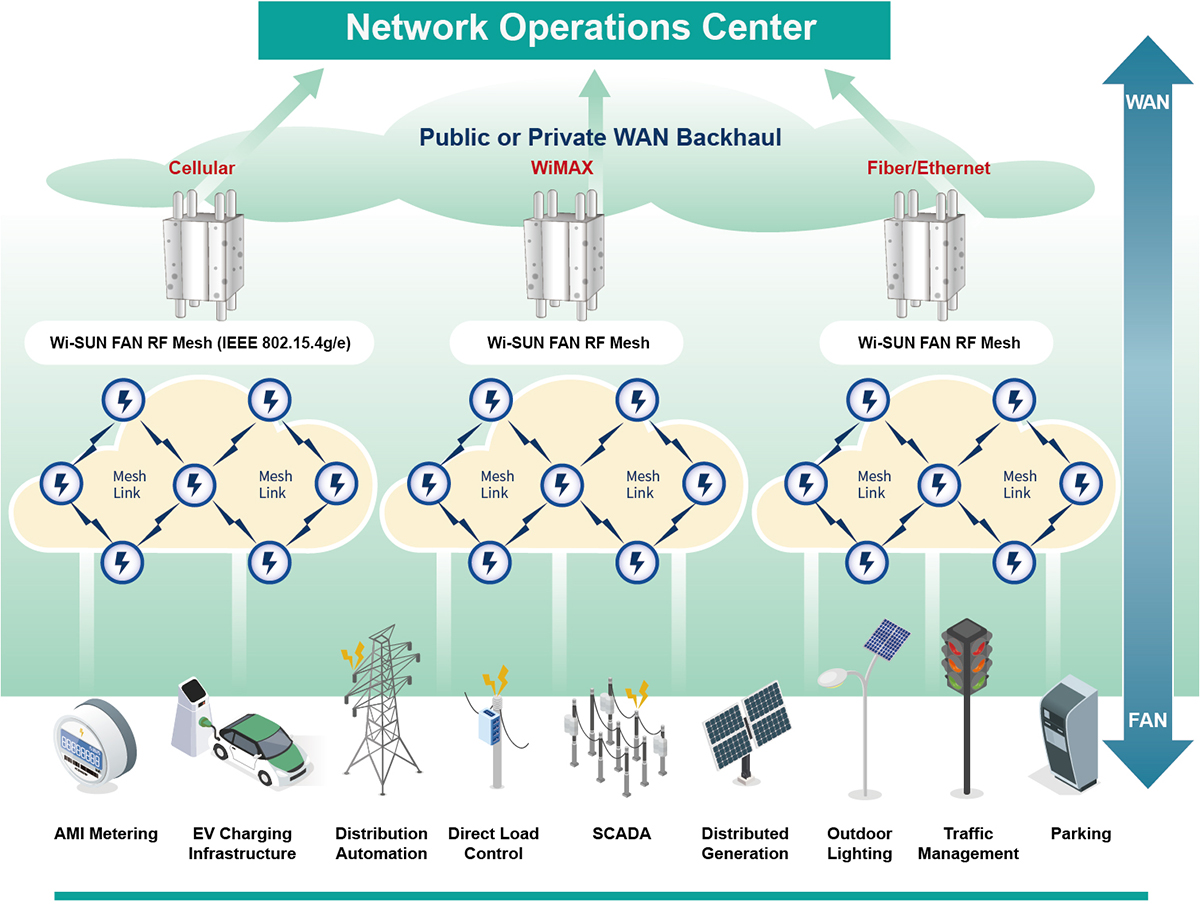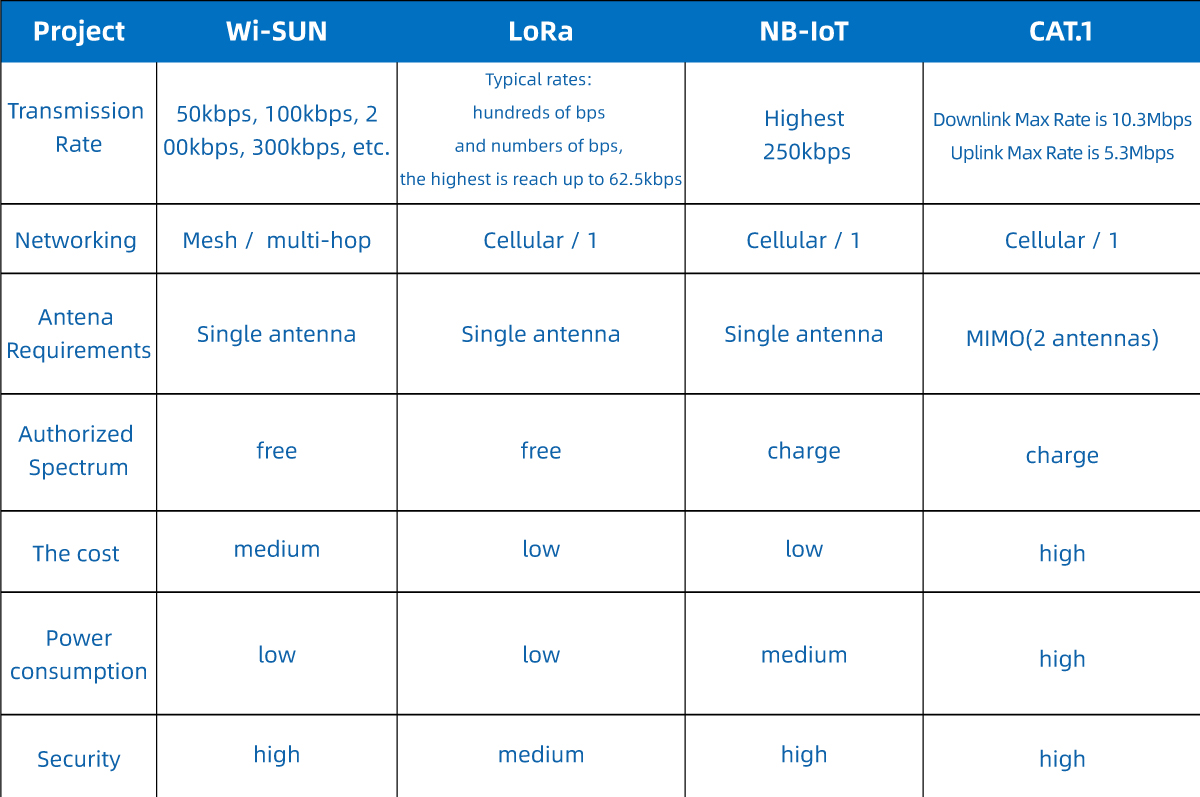
Recently, RF-star, a veteran wireless IoT company in China, announced that it has joined hands with Texas Instruments to launch several Wi-SUN products, focusing on the development of wide-area mesh, hoping to provide customers with integrated solution development environment of end-edge-cloud in the field of industrial IoT and public facilities. The products disclosed by the company include a variety of Wi-SUN communication modules based on the TI CC1352 and CC1312 series, which support Sub1G multi-band and 2.4GHz communication, and support self-organizing networks by mesh and multi-hop. The distance of a single hop can reach several kilometers.
Development history of Wi-SUN
Even for most people in the IoT circle, Wi-SUN is a new technology. Actually it has been created for more than a dozen years. However it floated only in recent years after more major chip vendors and device manufacturers joined the technology alliance and started to promote the technology.
As early as 2008, there was no unified wireless communication standard for the Wide Area network in the industry, while there were various wireless communication protocols in the industry at that time. What these protocols have in common is that they adopted the IEEE 802.15.4 standard. But they still cannot achieve interconnection in the application layer. In order to solve this complex problem, Wi-SUN FAN (Wireless Utility Field Area Network), a large-scale wireless mesh network based on IP technology came into being. The standard is committed to becoming the global wireless mesh network standard with interoperability. With the implementation of the standard, Wi-SUN alliance was established in 2012. Currently, the alliance has more than 250 members worldwide, including Cisco, ARM, Texas Instruments and Itron, etc.
Over the past two years, the Wi-SUN standard has matured, and hundreds of millions of Wi-SUN enabled devices have been deployed worldwide. It is widely used in public utilities and smart city facilities due to its feature of enabling smart meters, smart street lights and other devices to be connected to a public network.
Wi-SUN technology is an open specification based on IEEE 802.15.4g, IEEE 802 and IETF IPv6 standard protocols. Wi-SUN FAN is a mesh network protocol that support self organizing and self-healing functions. Each device in the network can communicate with its neighbors, and signals can be transmit to each node in the mesh, making very long range hops in between.
Wi-SUN features long distance transmission, security, high scalability, interoperability, easy deployment, mesh network, as well as low power consumption (the battery life of Wi-SUN modules has a chance to It can be used for ten years). It is widely used in smart meters and family intelligent energy management (HEMS) controllers for communication, and is also conducive to building a wide-area large-scale internet of things.
The Wi-SUN standard mainly consists of two sub-specifications, namely FAN and HAN. The differences of technology and application scenarios are as follows:
FAN
HAN

Typical application architecture of Wi-SUN FAN is shown in the following figure, where the FAN layer is a diagram of smart devices embedded with the Wi-SUN FAN Stack combined with routing to the PAN network. The edge routing nodes of different PAN networks in WAN layer access the public network through different communication modes.

Advantages of IP-based technology
1. Strong interoperability
It is a unique advantage of IP architecture. IP architectures running over different types of link layers can communicate with each other, and IP also enables communication with legacy networks and applications.
2. Universal and stable architecture
The success of IP architectures has been proven to be sustainable, mainly due to the fact that IP architectures are designed for application layer protocols and mechanisms to evolve independent of the underlying network protocols and mechanisms, thus realizing the fundamental principles of end-to-end communication. For smart devices in industrial application scenarios, the stability and reliability of devices and networks are highly important. The fact that the IP architecture has been applied in such scenarios reassures the stability of the system.
3. High scalability
Wide adoption of the IP architecture in the Internet has justified its scalability. Its global deployment shows that IP architectures can be applied across a large number of systems and operate well across different underlying protocols.
FAQ on Wi-SUN Technology
1. Can we make a comprehensive comparison among Wi-SUN, LoRa, NB-iot and CAT.1 over parameters such as power consumption, transmission rate, licensing (charged or free), security, and cost?
A: Please refer to the table below~

2. What are the main differences between Wi-SUN and ZigBee? How does its power consumption compare with ZigBee? Since a Wi-SUN's packet is longer than that of ZigBee, what additional cost will it incur, like in power consumption aspect? What is the routing protocol used by the Wi-SUN network layer? And what are its advantages over Zigbee in that regard?
A: Wi-SUN is mainly used for wide-area network coverage, with a single-hop distance of several kilometers. ZigBee is mainly used for indoor network coverage, with single-hop distances generally less than 100 meters. Besides, the protocols of two types of technology are somewhat different. In term of power consumption, the both are equal under the same transmission conditions. When transmitting long packets, the Wi-SUN’s packet loss rate will increase under same conditions. The routing protocol of the Wi-SUN is RPL while ZigBee mainly uses AODV. RPL is a low-power protocol suitable for IPv6, which can optimize the path based on the factors such as bandwidth, latency, and hop count, etc. AODV does cover IPv6 and low power design.
3. What advantages does Wi-SUN have over LoRa in battery-constrained low-power usage scenarios?
A: Under battery constrain, Wi-SUN nodes can choose a shorter distance routing/relay node for transmission to save energy, instead of having to determine the transmission distance when the network is formed like LoRa (because there is only one hop).